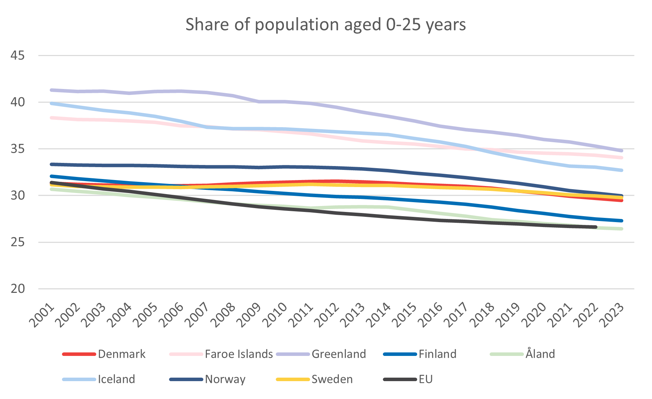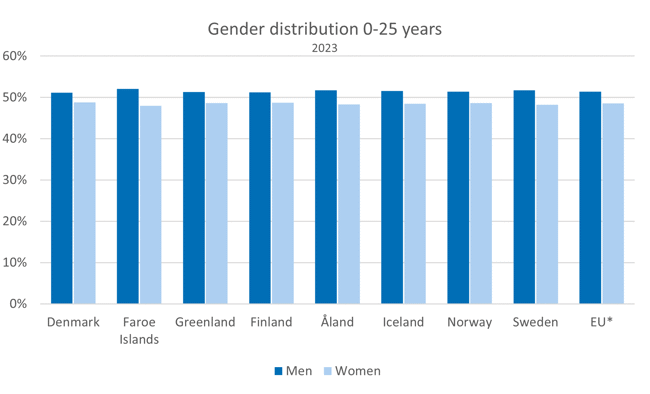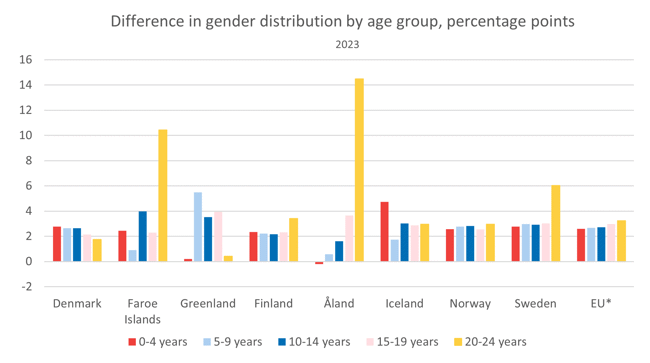New indicator set - Children and young people
The Nordic Council of Ministers’ vision for its efforts relating to children and young people is “The Nordic Region must be the best place in the world for children and young people”. This is also part of the Nordic Council of Ministers’ overall vision for the Nordic Region [1].
To facilitate the follow-up of this objective, a new cross-sectoral set of indicators has been added to the Nordic Statistics Database. The Children and Young People indicator selection covers information on status and development in terms of demography, physical health, mental health, family and living conditions, education and skills, working life, as well as leisure and culture.
Data is mainly collected from the Nordic Statistical Institutes, Eurostat and the collaborative WHO cross-national (HBSC) study [2].
The basic demographics of Nordic children and young people
The Nordic populations are ageing, and the share of the populations aged 0-25 years has declined in all countries in the past two decades. However, children and young people still constitute a higher percentage in almost all the Nordic countries than in the EU. There are though considerable differences between the countries.
The proportion of children and young people in the population ranges from Greenland, with a share as high as 35% in 2023, through to Åland, with a proportion of 26%. The latter is just under the EU average of 27% (2022 value, 2023 values are not yet available for the EU).

Source: Nordic Statistics Database, POPU01: Population 1 January by age, sex, time, unit and reporting country
In all the Nordic countries, as in the EU, the majority of children and young people (aged 0-25 years) are male.

Source: Nordic Statistics Database, POPU01: Population 1 January by age, sex, time, unit and reporting country *2022 values for the EU
When analysing the differences in gender distribution by five-year groups, a few things are worth noticing:
- The differences (men minus women) between the age groups are generally smaller for the larger countries. Some of this can be explained by the random variation having a greater impact when fewer individuals are analysed.
- For some countries the differences are higher with higher age. The largest differences can be seen for ages 20-24 years in the Faroe Islands and Åland, with the share of women being 10 and 14 percentage points fewer than men, respectively. These are two countries where access to higher education is limited and the labour market is smaller, which might be part of the explanation - young women could be moving to a greater extent than young men, for education and work.

Source: Nordic Statistics Database, POPU01: Population 1 January by age, sex, time, unit and reporting country *2022 values for the EU
In 2024, we plan for a series of news on the topic of Nordic Children and Young People – stay tuned!
_____________________________________________________________________________________
[1] https://www.norden.org/en/publication/children-and-young-people-nordic-region-0